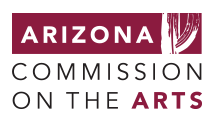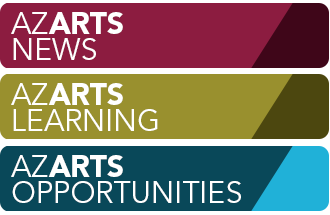The calendar below features upcoming Arts Commission deadlines, events, information sessions and workshop opportunities. Times, dates and event details may be subject to change. For more information, please email [email protected].
Learn about the Festival Grant! Program manager Brad Debiase will walk you through the guidelines and application process and take any questions you might have.
Learn about the Lifelong Arts Engagement Grant and Youth Arts Engagement Grant! Program manager Elisa Garcia Radcliffe will walk you through the guidelines and application process and take any questions you might have.
This is a public meeting. Members of the public are welcome to attend in person or listen online. Audio from the meeting will be live-streamed on our website at https://azarts.gov/panels/public-meetings/.
Meeting Documents
Meeting Minutes
Learn about the Lifelong Arts Engagement Grant and Youth Arts Engagement Grant! Program manager Elisa Garcia Radcliffe will walk you through the guidelines and application process and take any questions you might have.
On Saturday, March 11, nine exceptional young people will compete for the opportunity to represent the State of Arizona at the Poetry Out Loud National Finals in Washington, DC, and a shot at the grand prize: a $20,000 college scholarship.
Live Webcast
1:00 pm, Saturday, March 11, 2023
Visit https://poetry.arizona.edu/poetry-out-loud for more information.
This is a public meeting. Members of the public are welcome to attend in person or listen online.
Attend In-person
YWCA Southern Arizona
525 N Bonita Ave
Tucson, AZ 85745
Attend Online
You can join the meeting via Zoom or call-in to listen.
Join on your computer or tablet:
https://us02web.zoom.us/j/85801993202?pwd=ZVllWUYxajZUdXdCT1VtL3RaRG5QQT09
Passcode: 820100
Or One tap mobile : US: +16699006833,,85801993202# or +17193594580,,85801993202#
Or Telephone: (669) 900-683
Meeting Documents
Meeting Recording
Public Comment
Per A.R.S.§38-431.01(H)
A public body may make an open call to the public during a public meeting, subject to reasonable time, place and manner restrictions, to allow individuals to address the public body on any issue within the jurisdiction of the public body.
Members of the public who would like to make public comment may submit a request via the form below. Upon completion and submission of the form below, you will receive an email with further instructions.
We are no longer accepting requests for public comment for our March 21 board meeting.
This is a public meeting and will be held online. Audio from the meeting will be live-streamed on our website at https://azarts.gov/panels/public-meetings/.
Agenda
- Call to Order, Dawn Wallace
- Review of previous executive director hiring process, Jacky Alling/Alex Nelson
- Discussion, Commission Members
- Adjournment, Dawn Wallace
This meeting does not include time for public comment.
Meeting Documents
May 2 – May 4, 2023
9:00 am – 2:30 pm
The AZ Arts Learning Virtual Symposium provides professional development focused on trends and topics in arts learning. Designed to bring together Arizona’s arts learning community, the three-day virtual professional development will focus on sharing tools and resources to equip attendees with the inspiration and information they need to provide meaningful arts learning programing to diverse communities across Arizona. Join us as local teaching artists and arts organizations showcase the innovative work taking place across Arizona’s arts learning sector.



